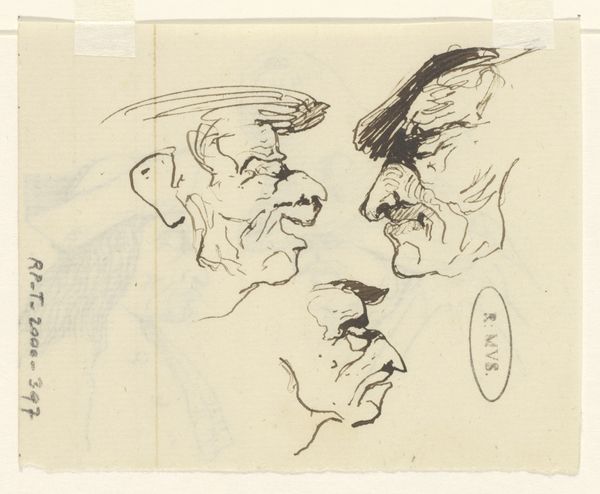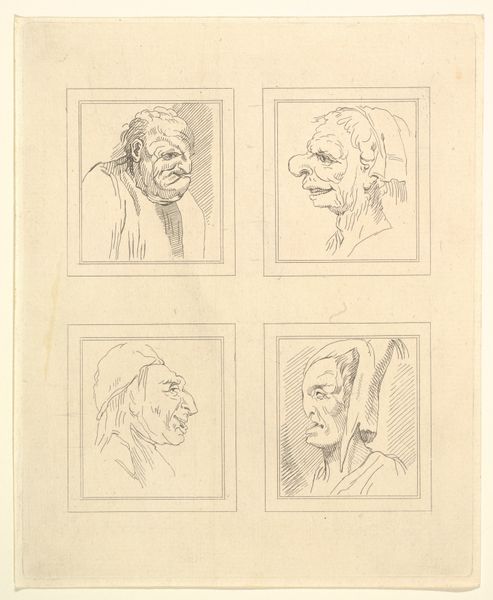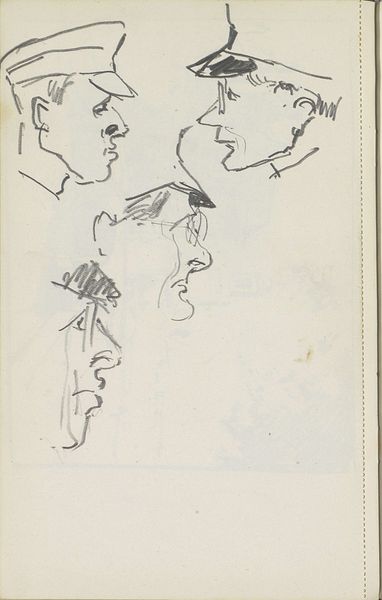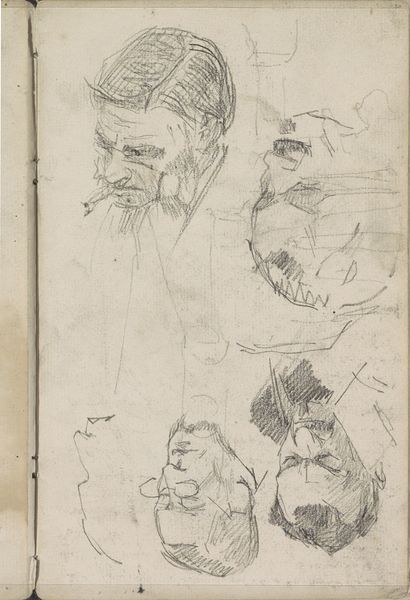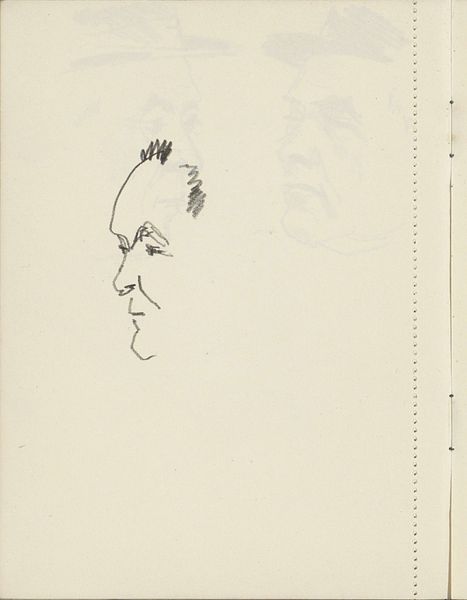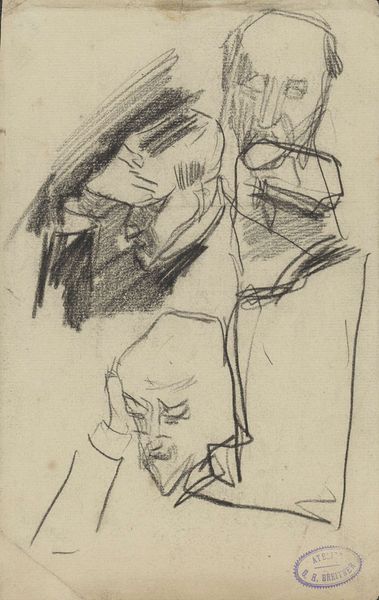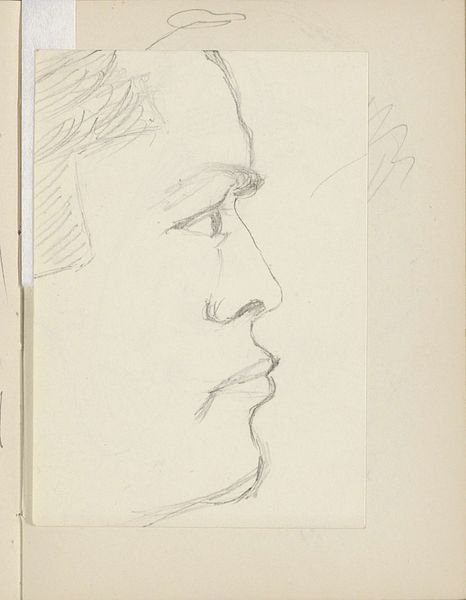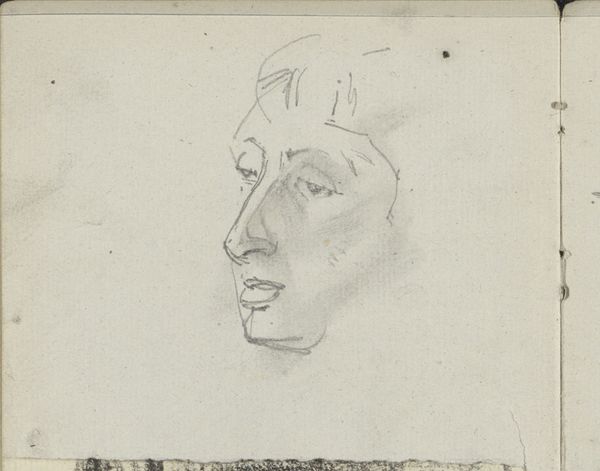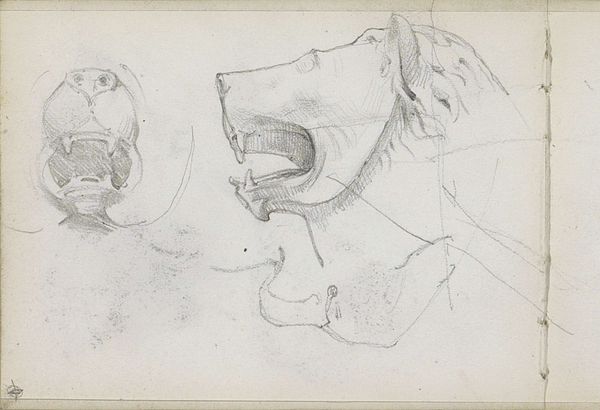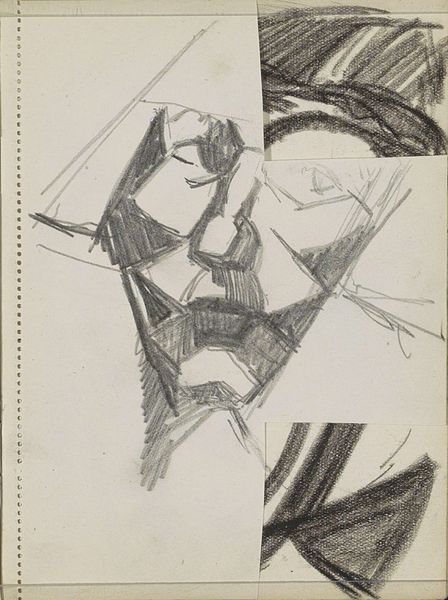
drawing, pencil
#
portrait
#
drawing
#
pencil
#
academic-art
Dimensions: 64 mm (height) x 85 mm (width) (bladmaal)
Editor: Here we have "To profiler vendt mod hinanden" - or "Two Profiles Facing Each Other" - a pencil drawing made sometime between 1809 and 1843 by Jens Juel. It strikes me as a study, perhaps for a larger painting, but the subjects seem caught in such stark opposition to one another. What do you see in this piece? Curator: I see a compelling visual representation of societal divisions of the time. Given the historical context, could we consider the woman, with her head covering, as representative of the laboring class, perhaps even a figure facing systemic oppression? While the man on the other side suggests power and privilege? Editor: I hadn’t considered that at all, but I can definitely see what you mean about the class divide. I had originally just assumed it was about age. Curator: It's possible to read age into it, but considering Juel’s historical placement, and the power dynamics inherent in portraiture itself, it's important to consider who is typically represented, and how. Why would Juel place these figures in direct opposition, divided by an unseen barrier, but connected within the same space? What kind of statement might that make about Danish society during this period? Editor: I guess I'm seeing the drawing not as a simple record, but almost a critique of its time. This is great! It's not just about aesthetic skill, but the potential for visual art to make political statements. Curator: Precisely! And in doing so, art provides space to reimagine the distribution of power, and challenges the foundations of social structures, even today. It allows us to think through ways to engage with complex issues and promotes more democratic values in representation.
Comments
No comments
Be the first to comment and join the conversation on the ultimate creative platform.


